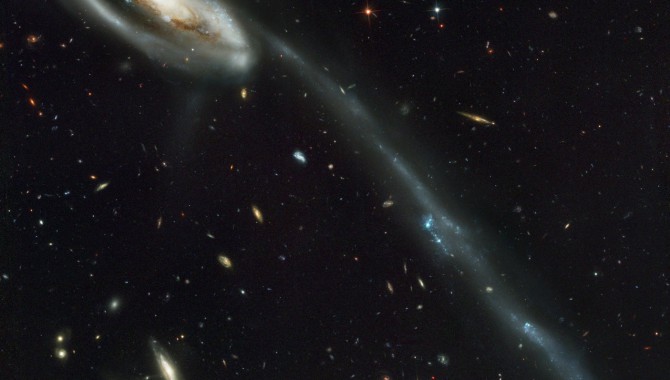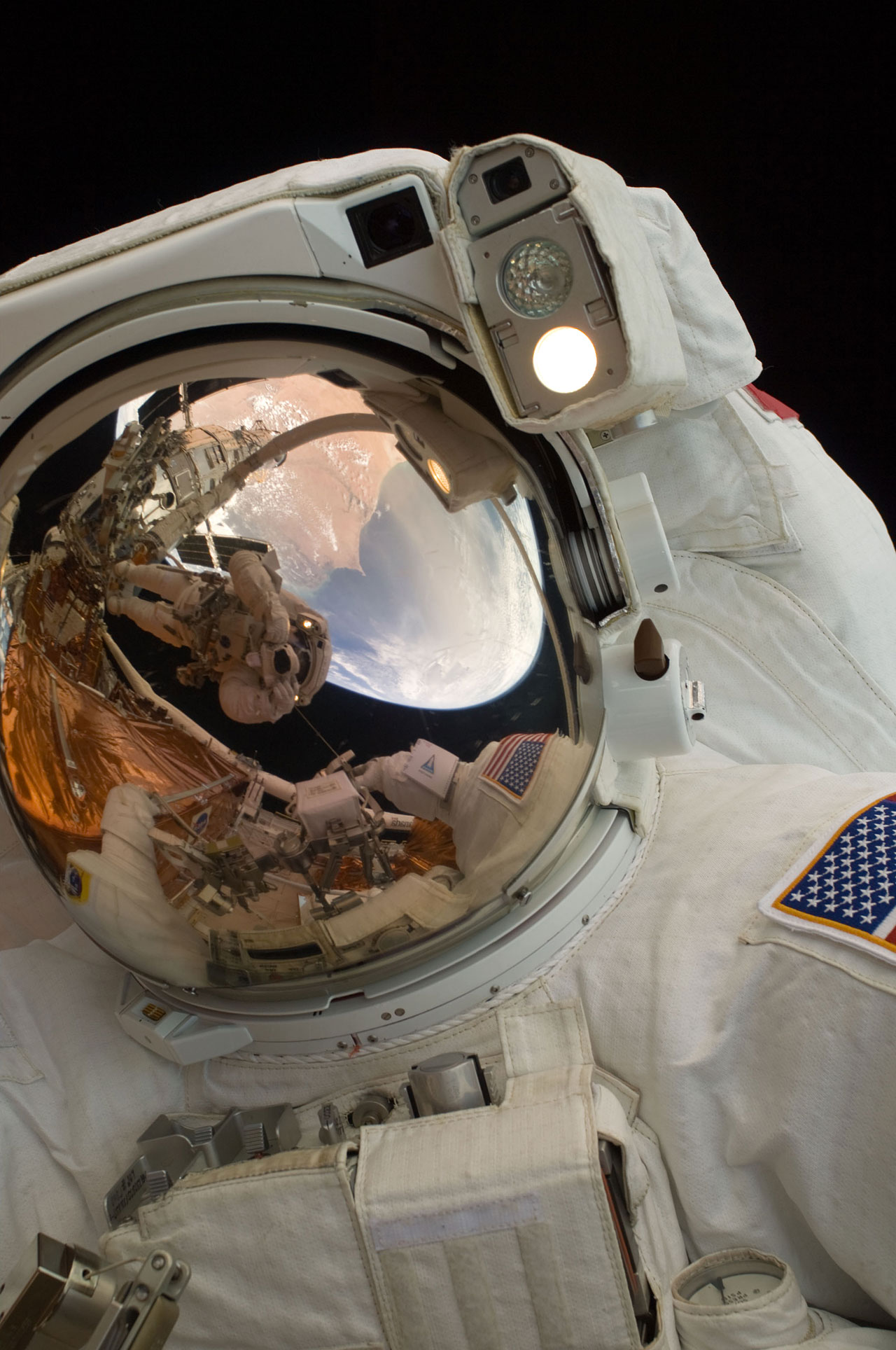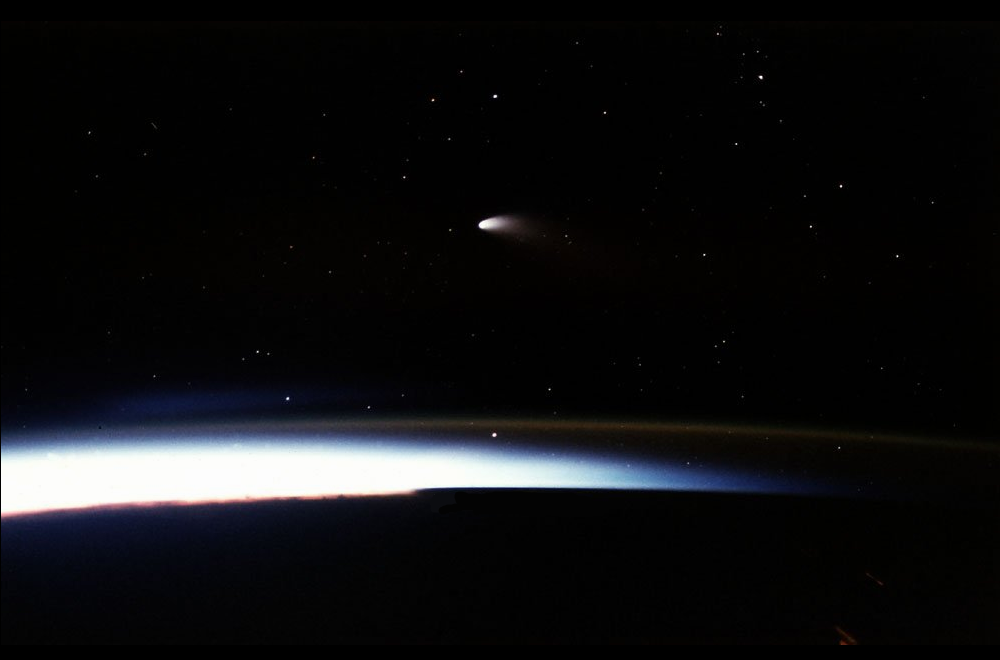
This picture of the galaxy UGC 10214 was was taken by the Advanced Camera for Surveys (ACS), which was installed aboard the Hubble Space Telescope (HST) in March 2002 during HST Servicing Mission 3B (STS-109 mission). Dubbed the "Tadpole," this spiral galaxy is unlike the textbook images of stately galaxies. Its distorted shape was caused by a small interloper, a very blue, compact galaxy visible in the upper left corner of the more massive Tadpole. The Tadpole resides about 420 million light-years away in the constellation Draco. Seen shining through the Tadpole's disk, the tiny intruder is likely a hit-and-run galaxy that is now leaving the scene of the accident. Credit: NASA / Marshall Space Flight Center
April 30, 2012 Vol. 5, Issue 4
Ten years ago this month, the Hubble Space Telescope saw its first “Tadpole” in space.
In March 2002, the STS-109 astronaut crew executed the fourth servicing mission to the Hubble Space Telescope (HST) to install what would become the most utilized camera on HST, the Advanced Camera for Surveys (ACS). The camera was designed to see some of the earliest activity in the universe, its spectrum ranging from the ultraviolet (UV) to visible spectrum. A month after installation, NASA switched it on and ACS spotted galaxy UGC 10214 – which became known as the “Tadpole” galaxy.
420 million light-years away in the Draco Constellation, the Tadpole galaxy formed when a smaller, hit-and-run galaxy blew right through it, leaving a trail of stars and gas behind it, creating a tail-like formation. The image ACS beamed back to Earth caused ripples in the astronomy community. In the image background approximately 6,000 other galaxies (twice the number visible in the Hubble Deep Field image) were shown.
Four years later, ACS broke. The flagship camera experienced an electrical failure that caused it to stop working. After studying the problem, engineers brought ACS back online using a backup power system. In January 2007, the backup system failed. Fortunately, the ACS electrical issue was contained and didn’t affect the rest of Hubble. “The fuse did what it was supposed to do. It saw a high current and it popped. It protected the rest of the telescope,” said Rick Howard, then Deputy Director of the Astrophysics Division of the Office of Space Sciences at NASA Headquarters, in a 2007 New York Times story.
Since the ACS was responsible for two-thirds of Hubble’s science data, there was an outcry to repair it during the last servicing mission scheduled for October 2008. Beginning in April 2007, an ACS repair team came together to develop a plan to fix a camera that was not designed for on-orbit repair. Their solution drew upon knowledge from previous and current missions. “We leveraged what we learned on the STIS [Space Telescope Imaging Spectrograph] job,” said Michael Weiss, HST Deputy Program Manager, in a 2008 NASA Podcast. “You know, how to get to those components, how to remove large numbers of fasteners with fastener capture plates, how to build special tools for the astronauts to do the job.”
The solution applied technology being used on the James Webb Space Telescope. Called the Application-Specific Integrated Circuit (ASIC), this specialized integrated circuit fit an entire circuit board’s worth of electronics into a condensed package. After more than two hours of work, astronauts John Grunsfeld and Andrew Feustel, repaired the instrument during an extravehicular activity (EVA) on May 16, 2009.
Learn more about the Advanced Camera for Surveys.
Learn more about the power failure and repair.
This picture of the galaxy UGC 10214 was was taken by the Advanced Camera for Surveys (ACS), which was installed aboard the Hubble Space Telescope (HST) in March 2002 during HST Servicing Mission 3B (STS-109 mission). Dubbed the “Tadpole,” this spiral galaxy is unlike the textbook images of stately galaxies. Its distorted shape was caused by a small interloper, a very blue, compact galaxy visible in the upper left corner of the more massive Tadpole. The Tadpole resides about 420 million light-years away in the constellation Draco. Seen shining through the Tadpole’s disk, the tiny intruder is likely a hit-and-run galaxy that is now leaving the scene of the accident.
Featured Photo Credit: NASA / Marshall Space Flight Center








